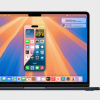If you have not gone shopping for a new TV in a number of years, one thing really stands out. Almost every TV regardless of type, resolution, or screen size on store shelves or online shopping sites is a Smart TV.
What a Smart TV Is
A Smart TV is a set that connects to the internet and incorporates an operating system/platform that lets you access, manage, and view online and network-based media content without connecting an additional media streamer.
Basic Smart TV Setup
In order to access smart features, a Smart TV needs to be connected to the internet. You do this through the same broadband router via Ethernet or Wi-Fi that you use to connect your PC to the internet.
Wired Ethernet provides the most stable connection, but if your TV is not in the same room as your router, Wi-Fi eliminates the need for a long cable. However, if you find that your Wi-Fi doesn’t reach other rooms, you might have to get a Wi-Fi booster/extender.
Tip: It’s suggested that if you plan to stream 4K UHD resolution video, a minimum internet speed of 25mbps and a wired ethernet connection are preferable for stable viewing.
If connecting via Wi-Fi, as part of the TV’s setup process you’ll be prompted to enter your network login information required by your internet service provider.
After you have gone through your TV’s setup process, it should display (once again check your user guide) an on-screen menu that includes a list of available internet streaming apps (similar to the apps on a smartphone). Some apps come preloaded, and most TVs can download more to add to the TV’s app library.
Tip: If you connect via Ethernet, internet connectivity is automatic, no login info should be required. However, read your TV’s user guide for specific details.

Smart TV OS
In order to provide smart features, a Smart TV runs on an OS (operating system). Depending on the brand/model of the TV, the OS used will vary. The OS used determines how you navigate the TV’s smart functions as well as which streaming apps are available to you and if there are provisions to add more.
Here are some examples of the major Smart TV OSs and some of the TV brands currently using them.
Tip: Other OSs may be used on models sold in specific markets and some TV brands have switched OSs in recent years. For specific details on the Smart OS that your TV uses, read your user guide.
Android/Google TV/Chromecast Built-in:
- Hisense (select models)
- Panasonic
- Philips
- RCA
- Sharp
- Sony
- TCL
- Toshiba
- Westinghouse
Fire TV OS Built-in:
- Amazon 4-Series/Omni Series
- Westinghouse
- Element
- Hisense (one model)
- Insignia
- JVC
- Toshiba

Select models from
- Element
- Hisense
- Hitachi
- JVC
- Magnavox
- Onn
- Philips
- RCA
- Sanyo
- TCL
- Westinghouse
Tizen: Samsung
WebOS: LG
SmartCast (based on Chromecast): Vizio

Tip: No TV has the Apple TV OS built-in, but some Smart TVs provide access to the Apple TV+ app.
The Benefits of a Smart TV
The main benefit of a Smart TV is access to many channels that offer TV programs, movies, and music without the need to connect a TV antenna. subscribe to a cable/satellite service or connect to an external media streamer.
When you click on the icon for a specific channel/app, you are taken to its content offerings, which you can select and view.
Each Smart TV OS offers access to hundreds or thousands of streaming apps. Streaming services such as Netflix, Disney+, Hulu, Amazon Prime Video, HBO Max, Paramount Plus, Peacock, Pluto TV, and Tubi TV are apps that are often pre-installed or easily found and downloadable to your Smart TV viewing selection. However, keep in mind that not all apps are available on all Smart TVs.
There is no Smart TV OS that provides access to all possible streaming apps.
Tip: Smart TVs also can receive TV programming via antenna or cable/satellite just like any other TV via its physical connections (ANT/Cable, HDMI, AV, etc…).
In addition to internet streaming, most smart TVs include wireless Screen Mirroring (Miracast), Screen Sharing, and Screen Casting, all of which allow users to view content from compatible smartphones, tablets, and even Laptop/PC media content and view it on a TV screen.
Tip: TVs with Android or Google TV OS also have Chromecast built-in
Other Things a Smart TV Can Do
Tip: Access to one or more of the following capabilities depends on the specific brand/model TV and Smart TV OS used. Read the user guide for your specific TV for details.

Stream Music: In addition to streaming shows and movies, Smart TVs also offer a selection of music streaming services that may include Pandora, Spotify, iHeart radio, and, in some cases even TIDAL and or Qobuz. Of course, listening to music on your TV’s speakers isn’t ideal, which means that when you buy your TV, buy a soundbar to go with it at a minimum, but an AV receiver and speaker system will make that music sound even better!

Play Games: Depending on your TV’s Smart OS, you may have access to online gameplay. LG and Samsung are two examples. Also, Netflix and Amazon provide gaming selections.
Browse the Web: Select smart TVs that have built-in web browsing, such as Samsung and LG TVs.
Keyboard and Mouse: Menu text input and navigation via USB and/or Bluetooth Keyboard and mouse are available on select smart TVs.
Video Calls and Conferencing: Additional USB webcam is required.
Tip: Zoom does not have a smart TV app. However, you can connect your laptop/PC to your TV via HDMI, or use screen mirroring/casting to view Zoom calls/conferences on compatible smart TVs.
Control Other Smart Devices: This includes Alexa and Google/Nest Home Devices.
Whole House Audio: Wireless music system integration with compatible wireless speakers.
Voice Control: Usually done through a microphone on the remote control. The voice control system may be proprietary to the TV brand, or via Alexa, and/or Google Assistant. In addition, Samsung supports Bixby, and on some TVs, Siri is supported.
The Downsides of Smart TVs
It’s great to have smart TV features built right into the TV, but that isn’t necessarily the best approach.
App Access: The brand/model Smart TV you purchase determines the services and features that you can access. Although all Smart TVs access a lot of the same core services (Netflix, Vudu, Hulu, Pandora), many additional and niche channels might not be accessible on some smart TV platforms.
App Versions: Depending on the brand/model TV, the version of the app on your Smart TV might not be the same as the App version on your PC or external streaming device. This means you might find yourself needing to buy an external streaming device (Roku, Fire TV, Chromecast, Apple TV) to get the best version of the apps you want.
Security: If you use a Smart TV to purchase content online, third parties could get access to your information. The reason for this is that smart TVs don’t have the same security software that is available for PCs or smartphones.
ACR (Automatic Content Recognition): Your Smart TV knows what you watch and sends that information to the TV maker. This might result in targeted ads popping up on your TV screen. Apps such as Netflix track your viewing habits to make suggestions on what you might like to watch, but ACR takes it further with those unwanted ads. Consumer Reports offers some tips on how you might be able to disable this feature.
Menu Navigation Inefficiency: It’s great to have access to so much content on your TV. However, TVs don’t have the processing power that your PC or even most external media streamers do. This means a sluggish operation in finding the content you want to watch as well as selecting, downloading, and installing apps.
Updates: All Smart TVs can be updated directly through the internet, which means that new features and fixes make you less susceptible to early obsolesce. However, eventually, they do become obsolete with regard to one or more apps or features. You might find that an app or feature is no longer available because your TV’s hardware is no longer compatible.
More to Consider When Shopping For A Smart TV
A very important thing to remember is that just because a TV has all the smart features you are looking for, doesn’t mean it provides the best picture quality. Your TV buying decision will be a compromise of what you want vs what is available that will fill most of your needs. For more on this, read our companion article:
Buying a New TV: Everything You Need To Know
Like it or not, whether you want to buy a Smart TV or not, that is what you will find on store shelves.
Related Reading


















































